


The Magnetic Bottle
How does a magnetic mirror reflect charged particles?
When a charged particle travels through a magnetic field, its motion is governed by the magnetic force given by:
![]()
The Lorentz equation
The force is always perpendicular to the velocity and the magnetic field
And its direction can be found using Fleming's Left Hand Grip:
The diagram below shows a model of a magnetic bottle :
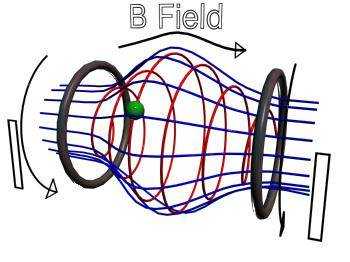
IMAGE - The magnetic bottle, similar to the Earth's magnetic field
where the magnetic field is represented by the blue lines and the path of a charged particle is the helical red path.
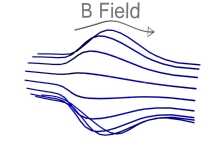
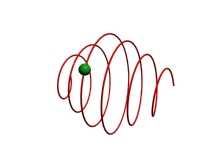
IMAGE - The magnetic field and the magnetic bottle
The magnetic field makes a charged particle of a certain velocity follow the red helical path
Particles near either end of the bottle experience a magnetic force back towards the centre. This can be seen clearly below:
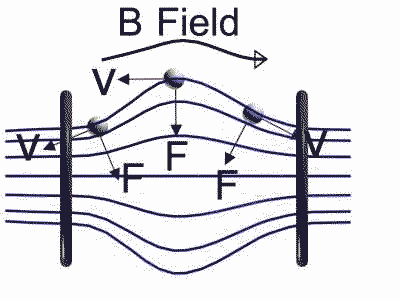
IMAGE - the magnetic bottle explained
When a charged particle is in the middle of the bottle, by applying the Lorentz equation, it can be shown that there is a force towards the centre of the bottle. Similarly, when the charged particle is at either end it can be shown the force is still pointing towards the centre of the bottle. It is this force which confines a charged particle to a magnetic bottle. In much the same way, the Earth's magnetic field produces a force which confines charged particles which gives rise to the Auroras Borealis
If a particle is initially very energetic, the magnetic bottle will not be able to confine the particle and it will escape. In exactly the same way, the aurora borealis and the aurora australis (Northern and Southern Lights) occurs when charged particles escape from the Van Allen radiation belt. These interact with the atmosphere through optical excitations of the gaseous atoms.
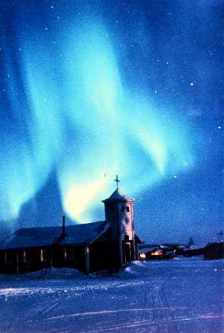
IMAGE - The Auroras Borealis

